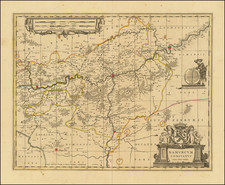Lizars map of Belgium offers a detailed depiction of the region during a period of significant change.
The map presents an accurate representation of the region, demonstrating the political landscape following the Napoleonic era. It showcases the boundaries and divisions established by the Confederation of the Rhine, a group of German states set up by Napoleon in 1806. Despite the Confederation's dissolution in 1813, its influence on the region's political geography is clearly seen in the map.
Belgium, which had gained its independence from the Netherlands in 1830, is displayed as a new nation divided into several provinces. The distinct borders of these provinces, laid out on the map, illustrate the young nation's quest for a unified national identity.
The map also provides a broader European context by showing the surrounding countries and their borders. This wider view underscores the interconnected nature of European politics in the mid-19th century, characterized by fluid national boundaries and complex international relations.
The Lizars were a Scottish family of engravers and printers who produced many views and maps. Daniel Lizars Sr. (1754-1812) was the son of a shoemaker, but he apprenticed with Andrew Bell, a printer and engraver. Lizars set up his own printworks near St. Giles Cathedral and took on his own apprentices, including George Bartholomew, whose son John would go on to found the important mapmaking firm later know as John Bartholomew & Son Ltd.
Daniel Sr. had three sons: Daniel Jr., John, and William Home. He also had a daughter, Jane Home. Daniel Jr. (1793-1875), the youngest of the boys, apprenticed in his father’s shop alongside George Bartholomew. When his father died in 1812, Daniel Jr. took over much of the business, expanding it and specializing in maps. The company went bankrupt in 1832, however, and Daniel emigrated to Canada.
John Lizars (1792-1860), the middle son, studied medicine and became Professor of Surgery at the Royal College of Surgeons of Edinburgh, as well as senior surgeon at the Royal Infirmary of Edinburgh.
William Home Lizars (1788-1859), the eldest, also apprenticed in his father’s shop. After learning engraving, William entered the Trustees’ Academy to learn under John Graham. He was a skilled painter and artist. When his father died, and after his Daniel Jr. left, he carried on printing and invented a method of etching that looks like wood engraving.









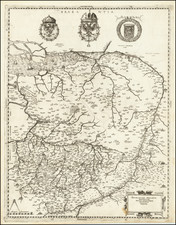
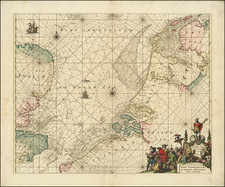
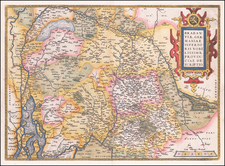
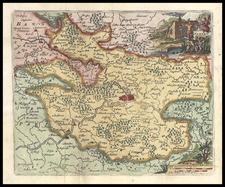
![(France) Gallia Antiqua Ex Aevi Romani Monumentis Eruta et Serenissimi Carnutum Ducis Munificentia Publici Juris Facta [Ancient Gaul From the Roman Age, the erudite Monuments. . .]](https://storage.googleapis.com/raremaps/img/small/82019.jpg)
